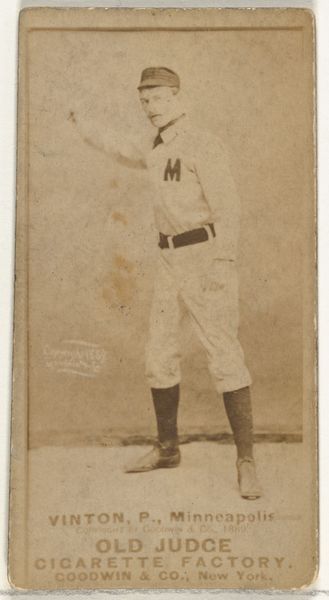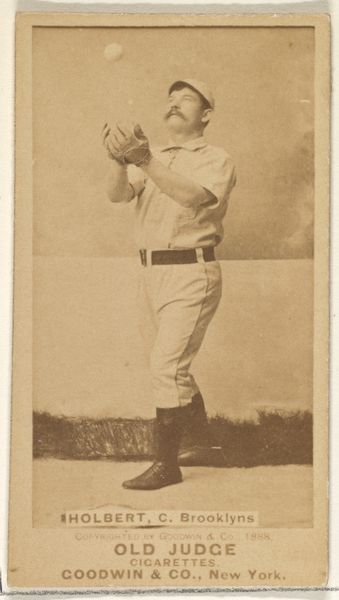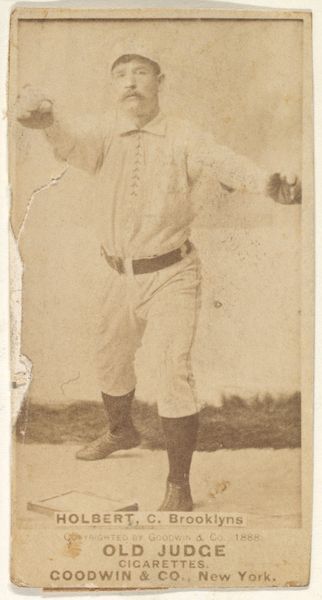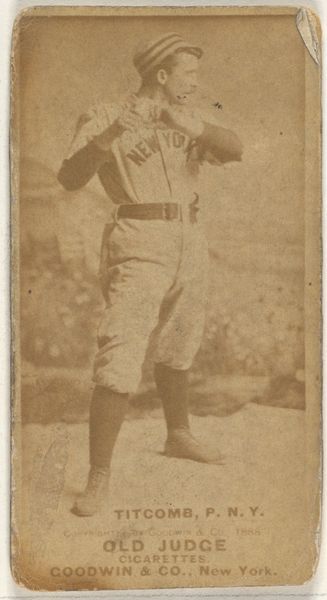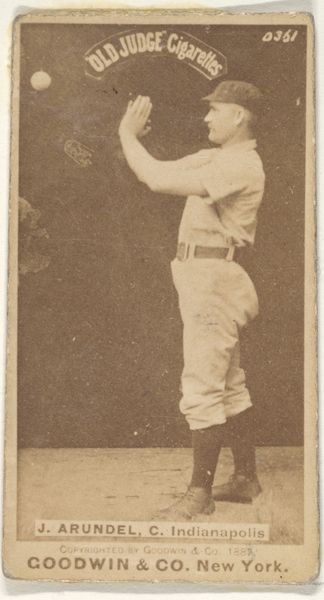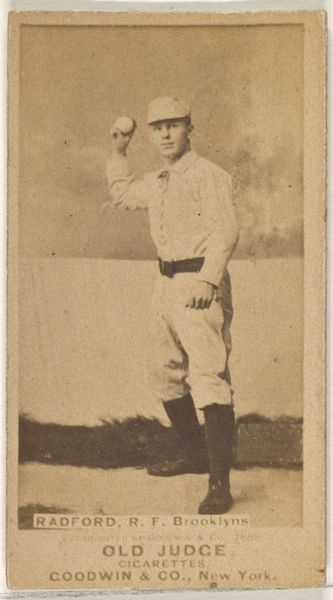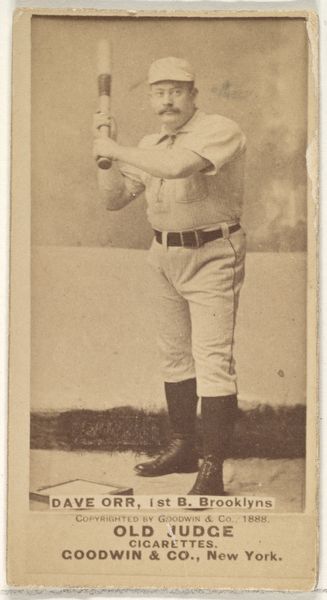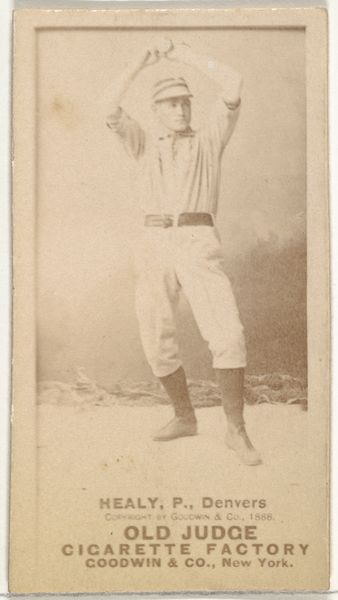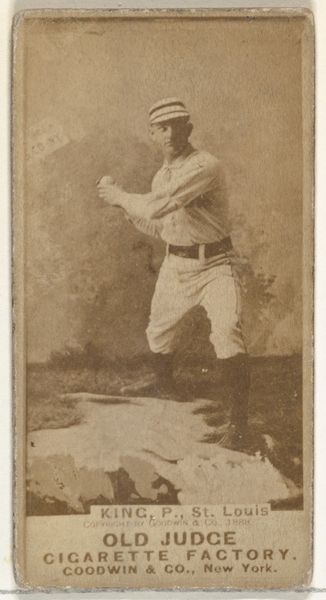
John Alexander "Bid" McPhee, 2nd Base, Cincinnati, from the Old Judge series (N172) for Old Judge Cigarettes 1888
0:00
0:00
drawing, print, photography, albumen-print
#
portrait
#
drawing
# print
#
baseball
#
photography
#
men
#
albumen-print
#
realism
Dimensions: sheet: 2 11/16 x 1 3/8 in. (6.9 x 3.5 cm)
Copyright: Public Domain
Curator: Here we have an albumen print from 1888, part of the Old Judge Cigarettes series, showcasing John Alexander "Bid" McPhee, the Cincinnati second baseman. Editor: The sepia tones and its petite scale lend a palpable sense of the past. It’s a ghostly artifact, hinting at a different era of labor, industry, and leisure. Curator: The composition is straightforward—a full-body portrait of McPhee in his uniform, ready to catch a ball. Notice the strategic arrangement of his posture against the backdrop; it speaks to classical ideals of heroism rendered anew. Editor: I'm more fascinated by what it doesn’t explicitly show. Cigarette cards and the broader tobacco industry exploited cheap labor; they are historical testaments to advertising's powerful role and mass-produced popular culture. The photograph is affixed to this particular industrial, commercial pursuit. Curator: Absolutely, we can’t ignore the context of its creation—distributed as a promotional item within cigarette packs. It served as an ingenious method to market towards the growing popular interest in baseball, influencing a new generation. But, I still suggest viewers contemplate its stylistic ties. The pose recalls Neoclassical statuary—there’s that perfect poise, and idealized athletic form made legible for the consumer. Editor: Right, its cultural value comes inextricably bound to its function within the commercial cigarette industry. One could read McPhee’s pose as symbolic—reaching for the capitalist ideal, perhaps? Even in the late 1880s the boundaries of consumption were heavily blurring. The workers, factories, and distribution networks are the essential groundwork. The paper and the sepia, these were also crucial elements. Curator: The albumen process, utilizing egg whites to bind the photographic emulsion to the paper, granted a notable image sharpness. It adds depth to the realism—emphasizing McPhee’s individual features while reinforcing the era's photographic style. It also makes it so arresting for us to visually parse today. Editor: Ultimately, these commercial cards reveal more than just baseball—they illuminate the industrial age, consumerism, and the intersection of labor, leisure, and photographic representation. It really gets you thinking about commodification of cultural phenomena. Curator: It does urge one to consider what it means for this seemingly timeless capture of a moment of play and artistry to find its existence predicated on production methods. Editor: Precisely! The card offers an unusual glimpse into the multifaceted relationships between material culture and mass spectatorship, captured in a transient commodity.
Comments
No comments
Be the first to comment and join the conversation on the ultimate creative platform.
